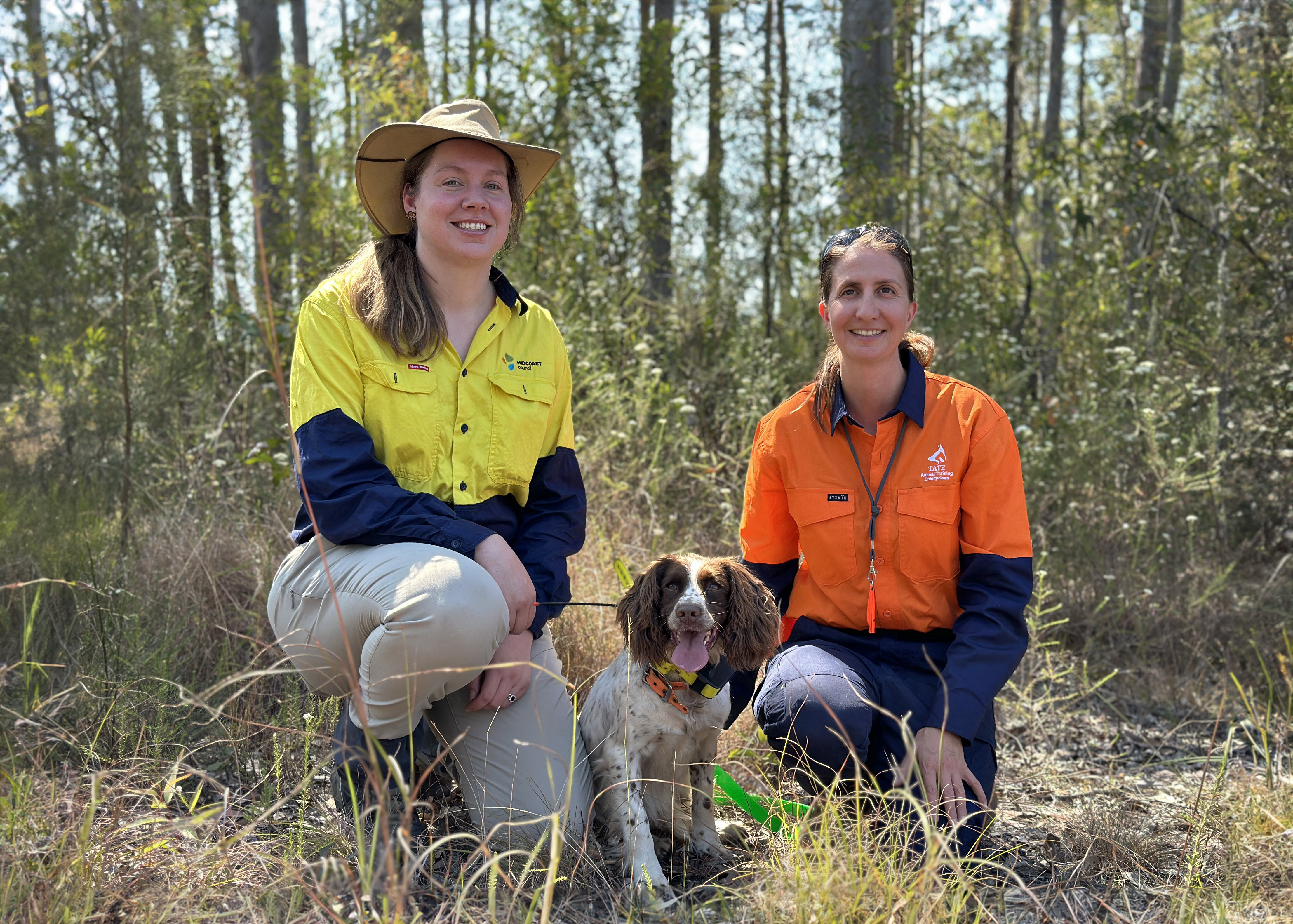Scent dogs used to locate koala habitat on the MidCoast
Published on 19 September 2023

Koalas can often become victims of dog attacks which has a negative impact on their population.
MidCoast Council are turning the tables and using man’s best friend as an important tool to study, and ultimately increase, koala numbers in our region.
Teams are using koala detection dogs to locate koalas by sniffing out their excrement providing researchers with more accurate figures and allowing them to document habitat locations.
MidCoast Council’s Acting Manager – Natural Systems Prue Tucker said scent dogs have become an integral part of the overall Koala Strategy.
“Koala detection dogs are great for this work because they are much quicker and better able to locate koala scats than humans, even highly trained ecologists,” Ms Tucker said.
“The dogs are trained to run through bushland and use their superior scent to locate koalas and their scats.
“This means they can find evidence of koalas even when they are present in low densities or in dense grass cover which would more than likely be missed by humans.
“The information we get from the help of the dogs is invaluable.”
The dogs used for the operation are often working Springer Spaniels (like Dash, the koala detection dog pictured) or Cocker Spaniels, but other breeds are used.
Council has engaged detection dog teams from two companies, Canines for Wildlife and Tate Animals. These companies have many dogs in their teams and the dogs are trained across a wide range of scents, including koalas, foxes and even weeds and threatened orchids.
When Dash sniffs out some koala poo she lets her handler know by dropping to the ground and “pointing” her chin to the scat she has found. If Lucy smells a koala in a tree above, she sits with her noise pointing up.
“The reward Dash gets from finding a koala or a koala scat is a few throws of a tennis ball so she can chase it. She really looks like she loves what she does,” Ms Tucker said.
But all the K9 sniffing power in the world won’t help unless the dogs and their handlers can access land where the information on koala presence is valuable and these are often on private land.
This is where MidCoast residents come in.
Council is calling on landowners to allow them access to their properties for the sole purpose of detecting koalas.
“To help Council manage our local koala population we are seeking help from landholders to gain current data on the distribution of koalas within the MidCoast area,” Ms Tucker said.
“We are asking property owners to get involved by providing access to their properties.
“This involves allowing a dog handler, their specialist trained koala detection dog and a botanist to access a small part of your property to conduct a koala habitat survey.
“This can benefit landowners too because they receive a report on the findings for their property.”
The Koala Strategy including the use of the detection dogs is provided under funding from the NSW Koala Strategy.
To contact Council to discuss possible koala habitats please go to the MidCoast Council website and complete a Koala Safe Spaces expression of interest form at www.midcoast.nsw.gov.au/koalasafespaces